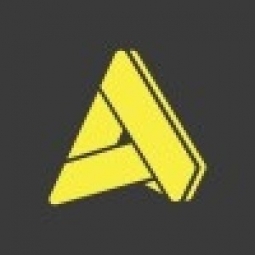公司规模
Large Corporate
地区
- America
国家
- Canada
产品
- Made2Manage ERP system
技术栈
- Microsoft
- SQL-based servers
实施规模
- Enterprise-wide Deployment
影响指标
- Cost Savings
- Customer Satisfaction
- Productivity Improvements
技术
- 功能应用 - 企业资源规划系统 (ERP)
适用行业
- 药品
适用功能
- 离散制造
用例
- 库存管理
- 补货预测
服务
- 系统集成
关于客户
Vita Health Products 是加拿大最大的天然保健产品和非处方 (OTC) 药物制造商之一。该公司的 500 多种产品以自有品牌或通用品牌在大多数加拿大主要零售商处有售,例如沃尔玛、好市多、Loblaws 和 Shoppers Drug Mart。1997 年,美国领先的维生素和补品供应商 Leiner Health Products 收购了 Vita Health,这巩固了该公司作为加拿大领先企业的地位,提供最完整的高品质 OTC 和天然保健产品系列。作为一家领先的药品制造商,该公司必须对时间敏感的原材料和成品保持严格的库存控制。产品必须在保质期之前分发,否则公司可能会失去客户、浪费库存成本并削弱其市场地位。
挑战
Vita Health Products 是加拿大一家领先的天然保健产品和非处方药制造商,其老化的 AS/400 系统无法满足公司日益增长的业务需求,因此陷入困境。该公司在维持库存控制、将产品保持在客户货架上以及管理成本投入方面都遇到了困难。由于缺乏预测能力,Vita Health 被迫储存更多产品库存,从而增加了储存成本和浪费的可能性。该公司还遭遇了严重的客户服务问题,并损失了大量业务。缺乏真正的 MRP 环境意味着预测需求和工作订单主要通过电子表格进行大量手动分析来确定和管理。这既耗时又费钱,显然公司需要改变“一切照旧”的做法。
解决方案
为了解决业务扩张过程中的“成长烦恼”,Vita Health 向 Made2Manage 求助。Made2Manage ERP 系统之所以被选中,是因为它功能强大、技术符合行业标准、兼容性强,并且提供本地支持。该系统为 Vita Health 提供了控制业务和再次积极扩张所需的工具。借助 Made2Manage,Vita Health 能够轻松识别和定位最旧的输入材料,并在生产过程中优先使用它们,从而减少库存过时和持有成本。该系统还提供了查看所有成本输入(直至组件级别)的可见性,使公司能够专注于成本并发现商机所在。展望未来,Vita Health 预计通过实施 M2M 需求预测可以提高库存准确性。
运营影响
数量效益

Case Study missing?
Start adding your own!
Register with your work email and create a new case study profile for your business.
相关案例.

Case Study
Case Study: Pfizer
Pfizer’s high-performance computing software and systems for worldwide research and development support large-scale data analysis, research projects, clinical analytics, and modeling. Pfizer’s computing services are used across the spectrum of research and development efforts, from the deep biological understanding of disease to the design of safe, efficacious therapeutic agents.

Case Study
Fusion Middleware Integration on Cloud for Pharma Major
Customer wanted a real-time, seamless, cloud based integration between the existing on premise and cloud based application using SOA technology on Oracle Fusion Middleware Platform, a Contingent Worker Solution to collect, track, manage and report information for on-boarding, maintenance and off-boarding of contingent workers using a streamlined and Integrated business process, and streamlining of integration to the back-end systems and multiple SaaS applications.

Case Study
Process Control System Support
In many automated production facilities, changes are made to SIMATIC PCS 7 projects on a daily basis, with individual processes often optimised by multiple workers due to shift changes. Documentation is key here, as this keeps workers informed about why a change was made. Furthermore, SIMATIC PCS 7 installations are generally used in locations where documentation is required for audits and certification. The ability to track changes between two software projects is not only an invaluable aid during shift changes, but also when searching for errors or optimising a PCS 7 installation. Every change made to the system is labour-intensive and time-consuming. Moreover, there is also the risk that errors may occur. If a change is saved in the project, then the old version is lost unless a backup copy was created in advance. If no backup was created, it will no longer be possible to return to the previous state if and when programming errors occur. Each backup denotes a version used by the SIMATIC PCS 7 system to operate an installation. To correctly interpret a version, information is required on WHO changed WHAT, WHERE, WHEN and WHY: - Who created the version/who is responsible for the version? - Who released the version? - What was changed in the version i.e. in which block or module of the SIMATIC PCS 7 installation were the changes made? - When was the version created? Is this the latest version or is there a more recent version? - Why were the changes made to the version? If they are part of a regular maintenance cycle, then is the aim to fix an error or to improve production processes? - Is this particular version also the version currently being used in production? The fact that SIMATIC PCS 7 projects use extremely large quantities of data complicates the situation even further, and it can take a long time to load and save information as a result. Without a sustainable strategy for operating a SIMATIC PCS 7 installation, searching for the right software version can become extremely time-consuming and the installation may run inefficiently as a result.

Case Study
ELI LILLY ADOPTS MICROMEDIA’S ALERT NOTIFICATION SYSTEM
Pharmaceutical production is subject to a strict set of enforced rules that must be adhered to and compliance to these standards is critically necessary. Due to the efforts of WIN 911’s strategic partner Micromedia, Lilly was able to adopt an alarm notification infrastructure that integrated smoothly with their existing workflows and emergency hardware and protocols. These raw energy sources enable the industrial process to function: electricity, WIN-911 Software | 4020 South Industrial Drive, Suite 120 | Austin, TX 78744 USA industrial steam, iced water, air mixtures of varying quality. Refrigeration towers, boilers and wastewater are monitored by ALERT. Eli Lilly identified 15000 potential variables, but limitations compelled them to chisel the variable list down to 300. This allowed all major alarms to be covered including pressure, discharge, quantity of waste water discharged,temperature, carbon dioxide content, oxygen & sulphur content, and the water’s pH.









